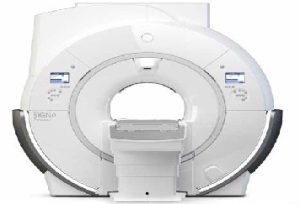by
Lauren Dubinsky, Senior Reporter | September 06, 2015
From the September 2015 issue of HealthCare Business News magazine
For the last two years, MR exams for every indication have been skyrocketing around the world, according to GE Healthcare data. In addition, a MarketsandMarkets report found that the market was worth $4.13 billion in 2013 and is expected to reach $5.24 billion by 2018.
Prostate and breast MR are a few of the areas receiving a lot of attention. Ultrasound is the go-to modality for prostate biopsies, and mammography is the gold standard for breast cancer screening, but many new studies are showing that MR is a promising option.
Hospitals are under pressure to be more efficient, and performing more MR exams per day is one way they are meeting that goal. The manufacturers are now offering solutions that bring the scan times down to less than 10 minutes.




Ad Statistics
Times Displayed: 30632
Times Visited: 779 Stay up to date with the latest training to fix, troubleshoot, and maintain your critical care devices. GE HealthCare offers multiple training formats to empower teams and expand knowledge, saving you time and money
But one of the biggest advancements in MR technology is the 7T magnet. It’s still a research modality, but work is being done to bring it to the clinical setting and it’s helping researchers make groundbreaking strides in neurology.
Prostate MR
The standard procedure for detecting prostate cancer is transrectal ultrasound guided biopsy (TRUSGB), which involves taking up to 30 needle biopsies of the patient’s prostate through the rectum. The physician has to take many sample biopsies because ultrasound provides no reliable information about where the cancer is located. But a recent two-year clinical trial conducted at The Wesley Hospital in Australia revealed that MR-guided biopsies can significantly improve the diagnosis of prostate cancer and reduce the over-diagnosis of non-life-threatening cancers. The new approach is called multi-parametric MRI (mpMRI) and it only requires two needle biopsies.
The trial had 223 patients with elevated prostate-specific antigen levels undergo both TRUSGB and mpMRI. It found that the use of mpMRI reduced the number of men requiring prostate biopsies by 51 percent, cut over diagnosis of non-life-threatening cancer by 90 percent and showed 92 percent sensitivity in diagnosing life-threatening cancer.
“For years, researchers evaluated various MR imaging techniques for prostate MR,” says Eric Jean, vice president and general manager of MRI at Philips. “What we’ve learned is that it is the combination of certain techniques (multi-parametric prostate MRI) that is yielding very high sensitivity and specificity for the detection of aggressive prostate cancer.”
A Texas Southwestern Medical Center study published in May found that for every 100 men evaluated, mpMRI led to 73 fewer biopsies and identified 16 prostate cancers. TRUSGB required all of the 100 men to undergo a biopsy and led to the diagnosis of about 20 prostate cancers.

